Are you interested in running your own Linea nodes? If so, you’ve come to the right place! In today’s tutorial, we’ll show you how to set up a free RPC node on Linea using Moralis – the industry’s leading Web3 infrastructure provider. With our intuitive point-and-click interface, you can now run Linea nodes without breaking a sweat. Here’s a quick three-step breakdown of the process if you’re eager to get started:
- Step 1: Sign up with Moralis for free.
- Step 2: Log in, go to the ”Nodes” tab, click ”+ Create Node”, and set up your free Linea node:
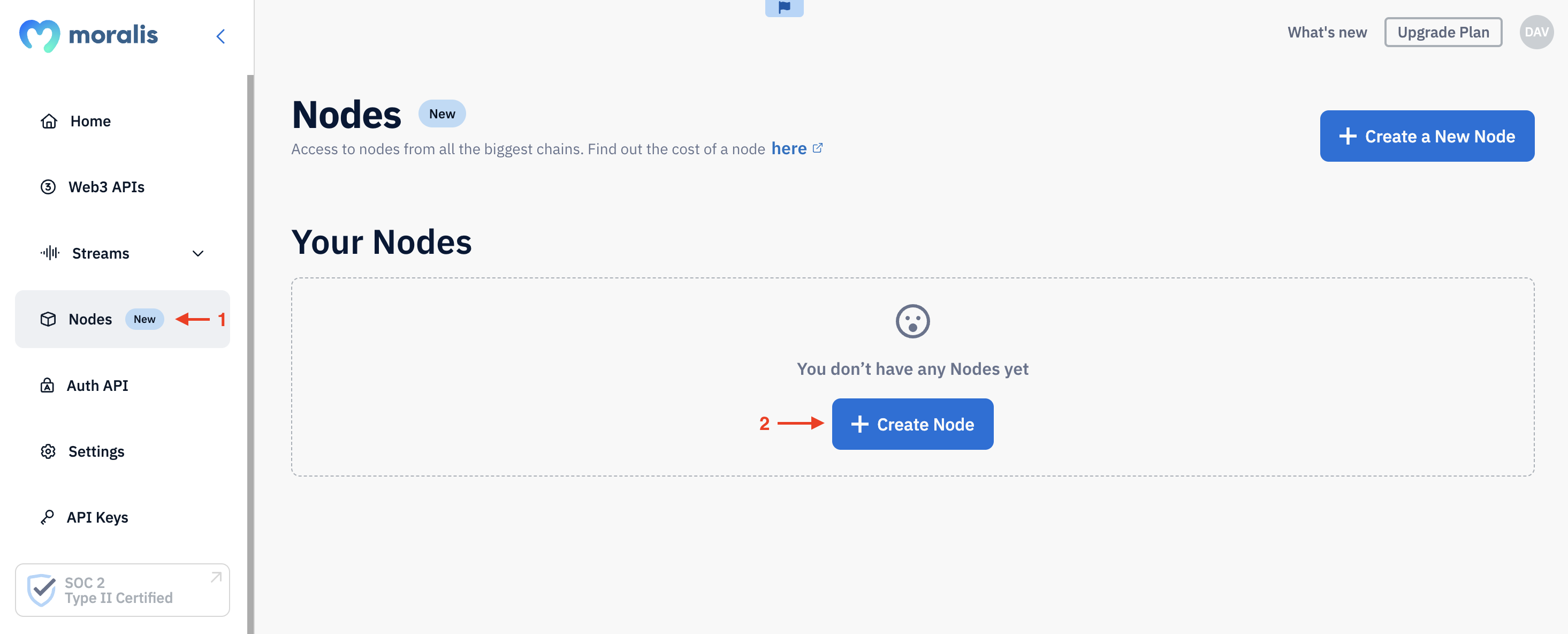
- Step 3: Copy and integrate one of your Linea node URLs into your dapp:
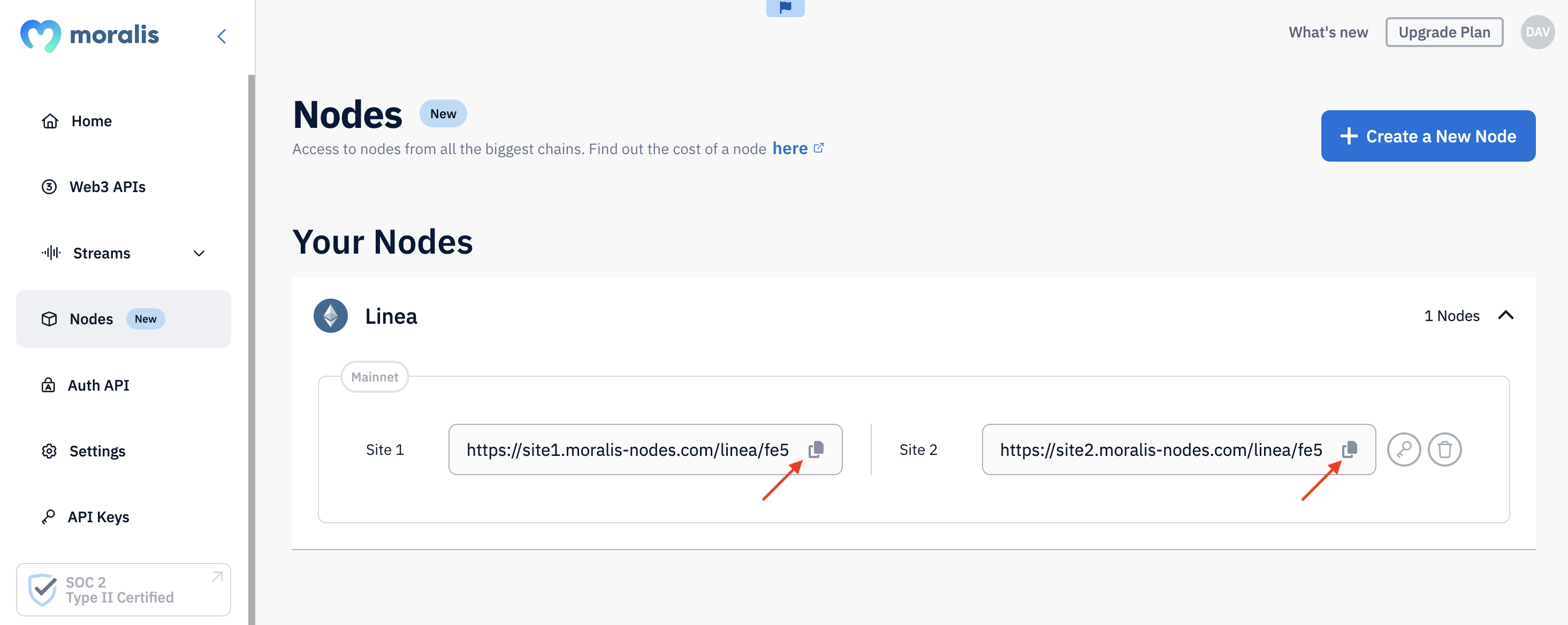
That’s it! Setting up Linea nodes is simple when you use Moralis. For a more in-depth explanation, please check out our RPC nodes documentation page or continue reading as we break down the entire process in detail.
Ready to set up your own Linea nodes? Sign up with Moralis today! You can create an account free of charge and gain immediate access to our premier nodes service!
Overview
Setting up and maintaining Linea nodes from scratch is a time-consuming and resource-intensive process. For instance, running full or archive nodes requires considerable bandwidth, significant computational power, and high storage capacity. Additionally, nodes are chain-specific, meaning you need to run and maintain a separate one for each network you interact with. As such, the associated costs and complexities can quickly escalate, particularly when building cross-chain projects. Fortunately, you can avoid these challenges by using a node provider like Moralis!

At Moralis, we simplify the process of running Linea nodes by managing the underlying infrastructure and complexities for you. This allows you to set up a free RPC node on Linea with just the click of a button. To learn more about how this works, follow along with us in this guide. Let’s get started!
What is Linea?
The Linea mainnet, launched in 2023, is a zero-knowledge (ZK) layer-2 (L2) scaling solution for Ethereum. It aims to enhance scalability and flexibility for decentralized applications (dapps), creating a favorable environment for both end users and developers alike!
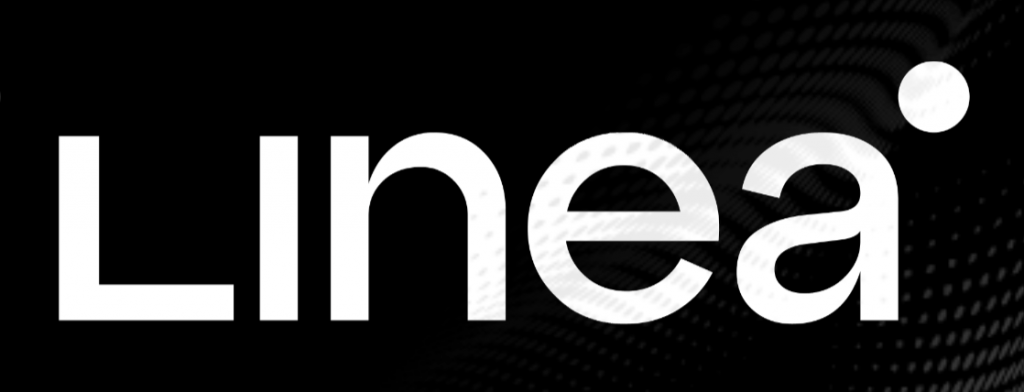
So, why should you build dapps on Linea?
- Ease of Use: Linea is fully EVM-equivalent, simplifying the migration of existing Ethereum dapps and smart contracts to the network. Additionally, it supports popular development tools, frameworks, and languages, including MetaMask, Truffle, and Solidity, providing developers with a seamless experience.
- Cost Efficiency: Linea leverages ZK-rollup technology to lower transaction fees, making it a more economically friendly alternative for developers and users than Ethereum. This efficiency is especially favorable for dapps with large user bases and high transaction volumes.
- Scalability: Designed to handle more transactions per second than Ethereum, Linea enhances network scalability. This capability makes it an excellent choice for dapps requiring high throughputs, such as decentralized exchanges (DEXs) and games.
Now that you have an overview of Linea let’s delve into the specifics of Linea nodes!
What are Linea Nodes?
Linea nodes are computers, servers, and other devices that participate in the network by performing various key tasks required to maintain the blockchain. These include transaction validation, block propagation, data storage, and much more. The blockchain consists of many nodes that collectively contribute to Linea’s decentralization and security!
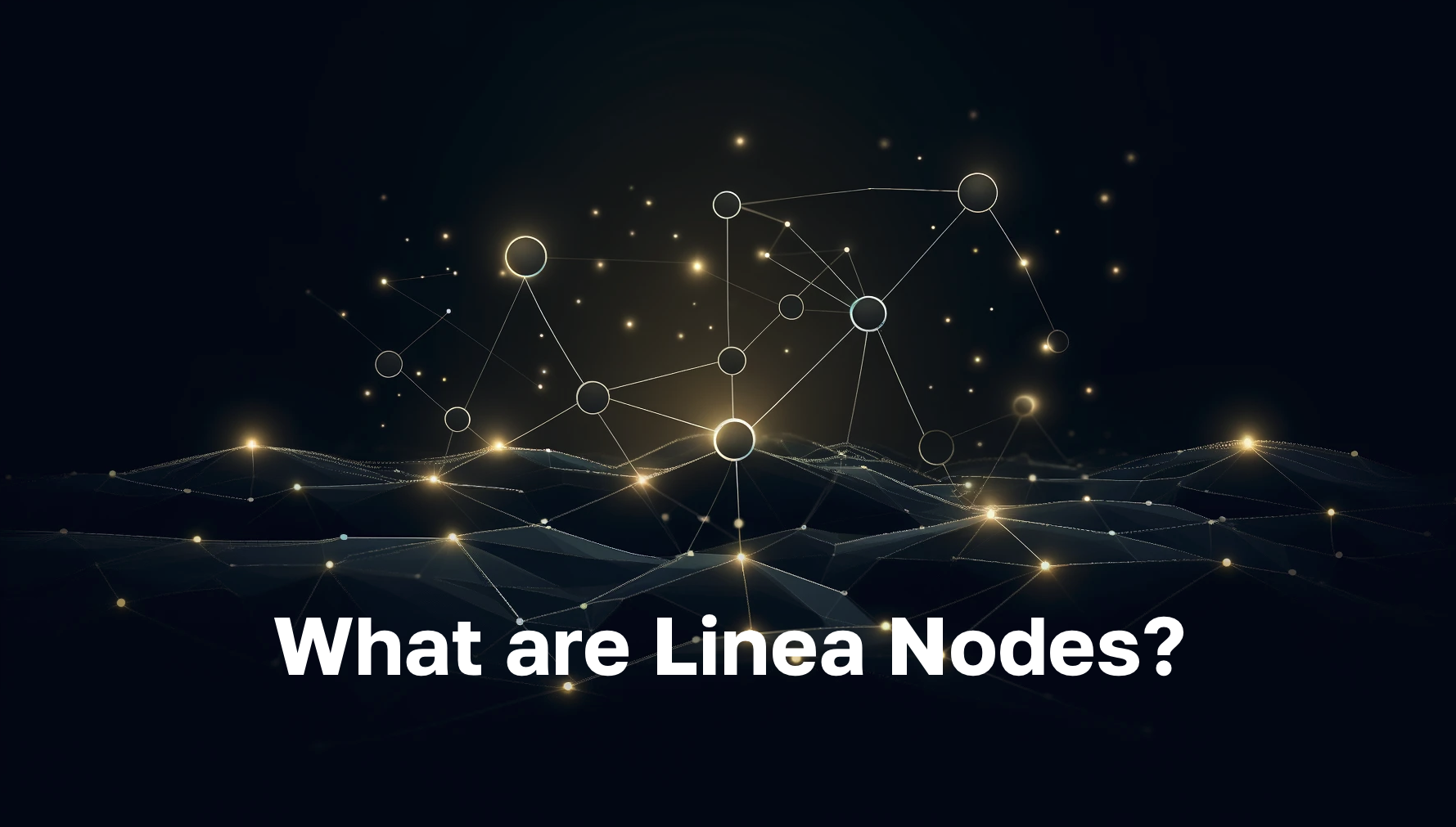
So, what exactly are Linea nodes used for?
Linea nodes have several use cases, and below, we’ll explore three examples:
- Transaction Validation: Linea nodes are responsible for validating transactions and adding new blocks to the blockchain. This critical function ensures the network remains secure and operational.
- Data Storage: Certain Linea nodes maintain a comprehensive record of the blockchain’s transactions and smart contract data. These nodes continuously update their information with every new transaction processed on the Linea network, ensuring the data remains current and accurate.
- Dapp Development: Linea nodes are used to both read and write blockchain data. As such, they are essential components for building dapps and other Web3 projects.
This overview of Linea nodes outlines their essential functions. Next, we’ll guide you through the easiest way to run Linea nodes!
How to Run Linea Nodes with Moralis
Setting up and running Linea nodes has never been easier, thanks to Moralis – the industry’s leading Web3 infrastructure provider. With our intuitive point-and-click interface, you can now set up Linea nodes without breaking a sweat. If you want to see how it works, join us below!
First, sign up with Moralis if you haven’t already done so. You can create a free account by clicking the “Start for Free” button at the top right:
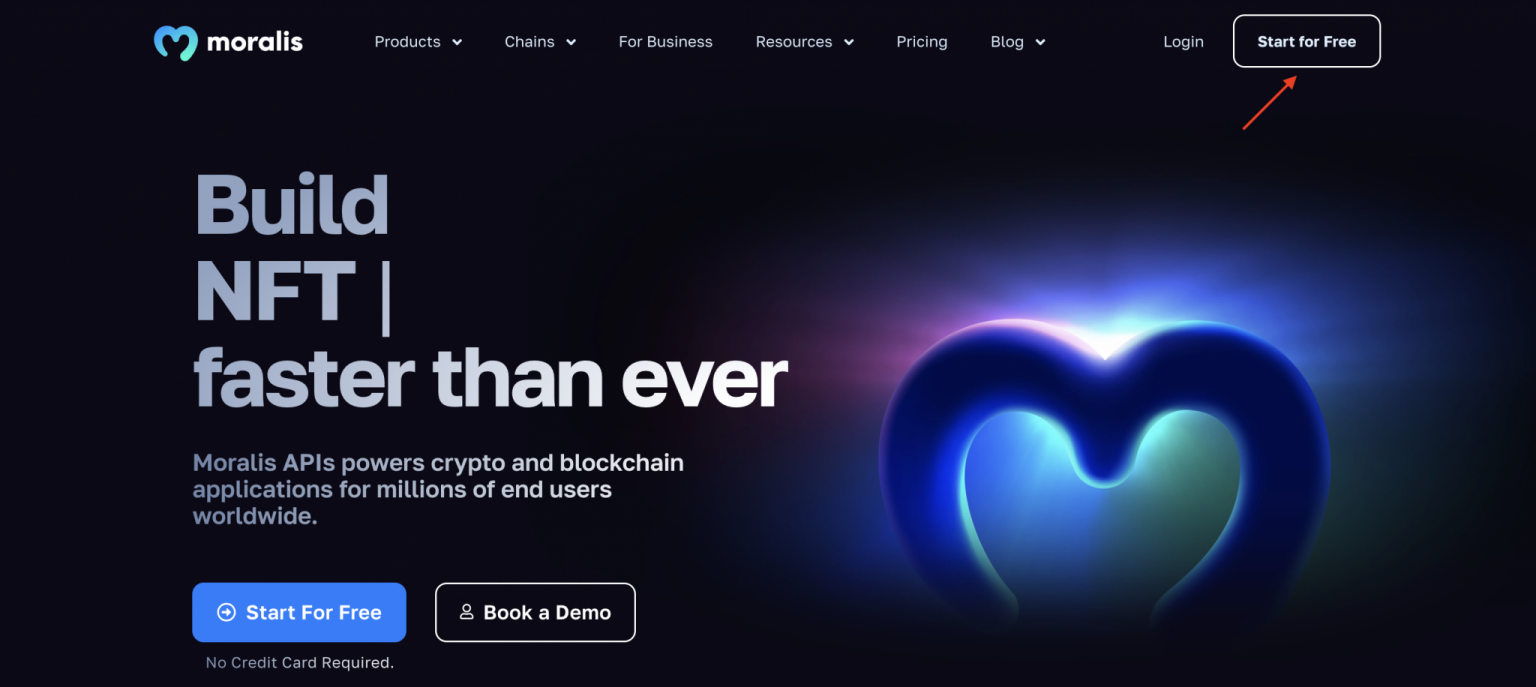
Once you have an account, log in, navigate to the “Nodes” tab, and click “+ Create Node”:
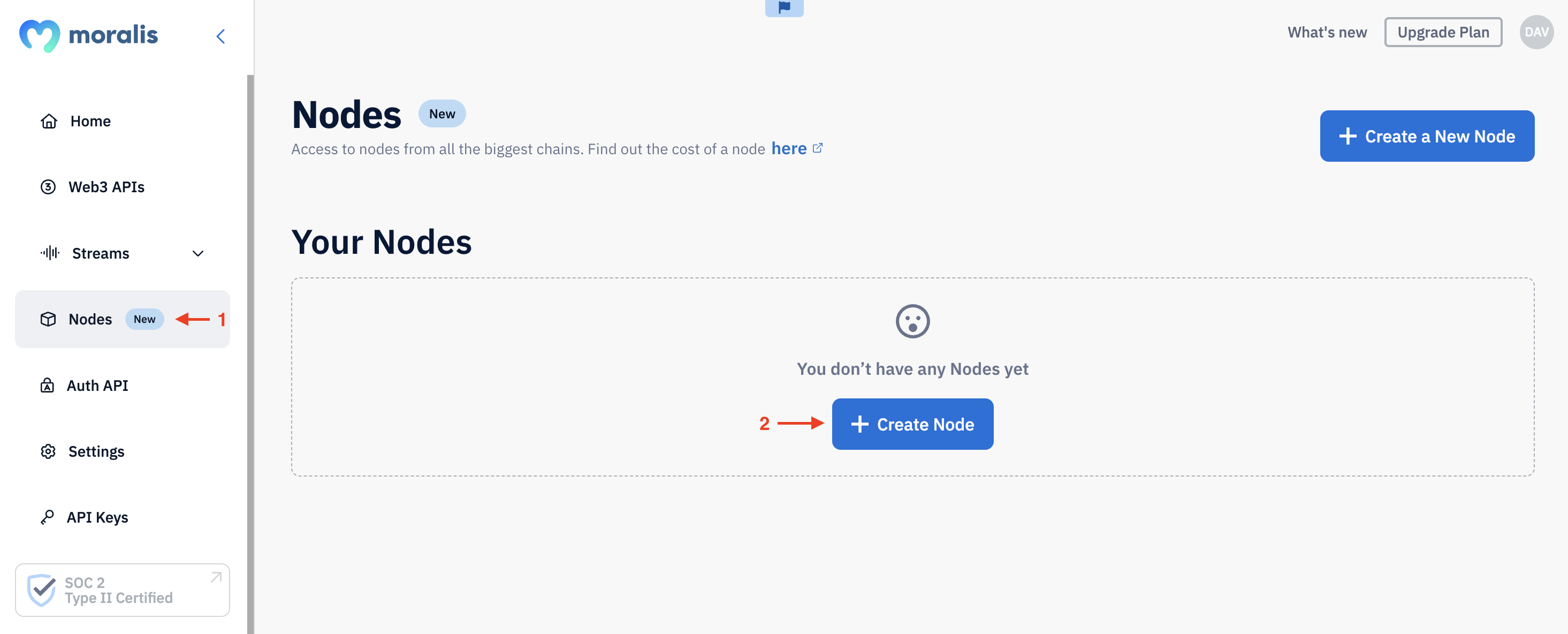
Next, select “Linea”, followed by “Mainnet”, and click “Create Node”:
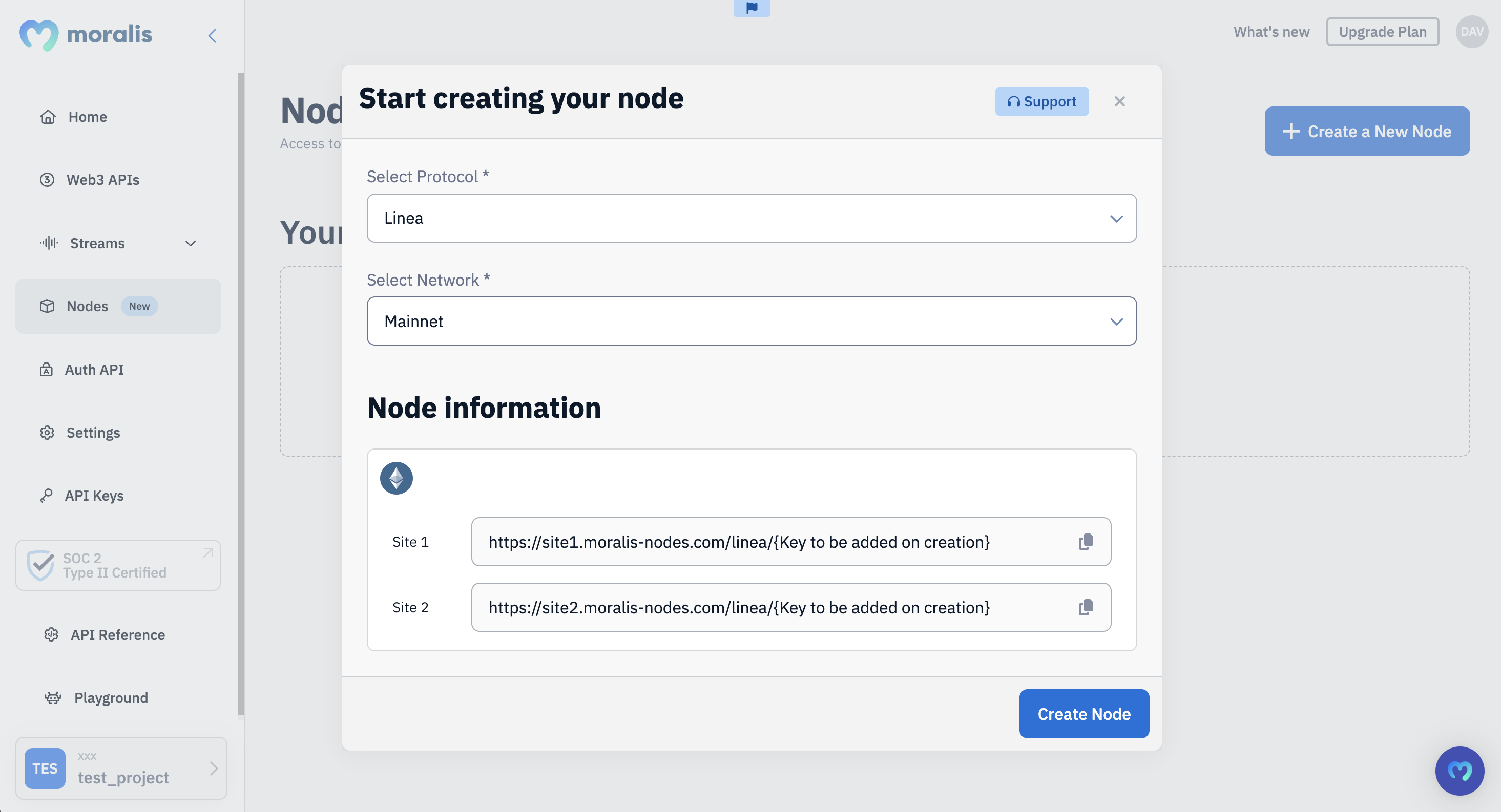
You’ll then receive two Linea node URLs you can copy and integrate seamlessly into your dapps:
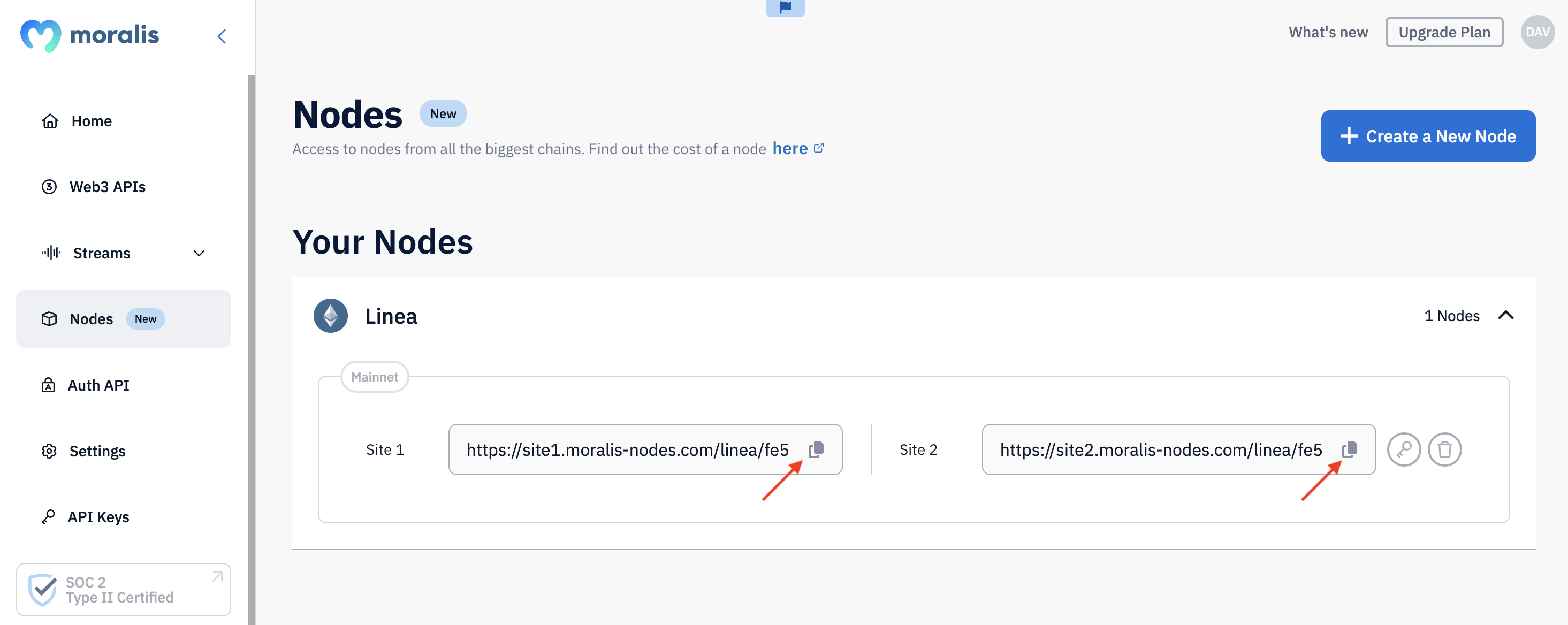
That’s it! Running Linea nodes is straightforward with Moralis!
Tutorial: How to Call Your Linea Nodes
Having learned how to run Linea nodes with Moralis, we’ll now show you how to make RPC calls to your node using ethers.js. Specifically, we’ll demonstrate how to fetch the native balance of any Linea wallet!
Before we start, ensure you have the following set up:
Once you have these ready, follow the steps below:
- Step 1: Open your preferred IDE, create a folder, and initialize a new project using this terminal command:
npm init
- Step 2: Install ethers.js with the following terminal command:
npm install ethers
- Step 3: Add
"type": "module"to your ”package.json” file:
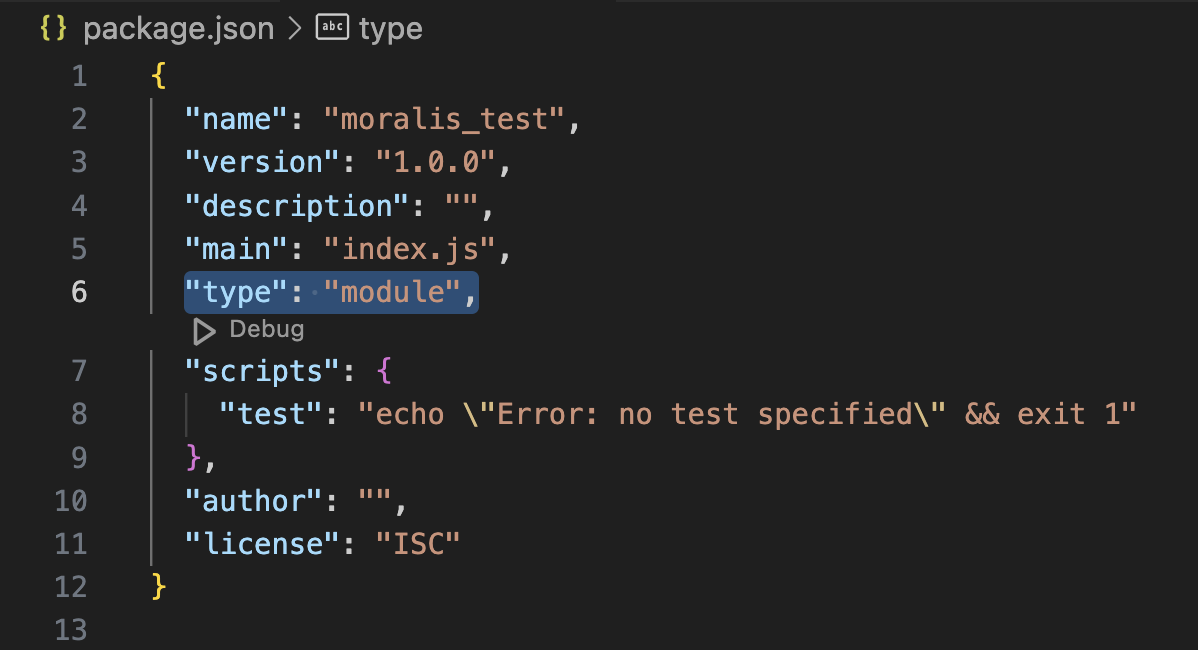
- Step 4: Create a new index.js file and add the following code:
import { ethers } from "ethers"; const provider = new ethers.providers.JsonRpcProvider("YOUR_NODE_URL"); const address = "0x2898730f10411D6E92cad809e78cc3a7Ea82C695"; const balance = await provider.getBalance(address); console.log("Balance: ", ethers.utils.formatEther(balance)); - Step 5: Replace
YOUR_NODE_URLwith one of your Moralis node URLs and configure theaddressparameter to fit your query:

- Step 6: Open a new terminal, navigate to the project’s root folder, and run the following command to execute the script:
node index.js
In return for running the code, you will receive the native balance of the specified wallet, which will be displayed in the terminal. It should look like this:
Balance: 0.008670621126214844
Congratulations! You now know how to make RPC calls to your Linea nodes!
For a more detailed breakdown and additional examples of the data you can retrieve with your Linea nodes, please watch the Moralis YouTube video below:
Limitations of Nodes
Nodes are crucial for interacting with blockchain networks like Linea. However, they are not ideal for querying and integrating on-chain data into dapps. Here are three key reasons why:
- Chain-Specific: Nodes are chain-specific, meaning they are tied to a certain network. This means you’ll need to run a separate node for every chain you’re interacting with, which can become costly and time-consuming if you’re building cross-chain projects.
- Complex: Nodes do not support straightforward data queries such as, “What tokens does wallet X hold?” Obtaining such information often involves multiple requests and manually piecing the data together, which complicates the process.
- Raw Data: Nodes provide raw data that needs to be decoded, interpreted, and formatted before it becomes useful. This additional processing adds to the complexity and effort required to build dapps.

But how can we address these limitations?
A better solution for querying on-chain data is to use Moralis’ Web3 APIs. With our industry-leading interfaces, you can easily access decoded and comprehensive data with just a few lines of code. Join us in the next section to learn more about how Moralis can streamline your data integration process!
Streamline On-Chain Data Integration with Moralis
Moralis is the leading data provider in Web3, offering top-tier APIs for a wide range of use cases, including wallets, portfolio trackers, DeFi dapps, finance platforms, tax tools, and more. So, regardless of the Web3 project you’re building, we have the tools for you!

But why leverage Moralis’ Web3 APIs to streamline on-chain data integration for your dapps?
- One Provider – All Chains: Moralis’ APIs are truly cross-chain, providing full feature parity across all major chains. This includes Linea, Ethereum, Polygon, Solana, and many more networks. Therefore, when building dapps with Moralis, you don’t need a new provider for each chain.
- Comprehensive & Simple: We offer Web3’s most comprehensive API response, giving you more data with fewer API calls. With a single request, you can access both on-chain and off-chain data.
- Secure: Enjoy enterprise-grade data security with Moralis, the only SOC 2 Type 2 certified infrastructure provider in the industry.
- Trusted: Moralis is trusted by 100,000+ developers and leading enterprises, including MetaMask, Opera, Blockchain.com, and many more.
That gives you an overview of Moralis. Let’s now explore some of our most prominent Web3 APIs!
Moralis Web3 APIs
In our premier suite of use case-specific APIs, you’ll find over ten top-tier interfaces. While we can’t cover all of them in this guide, we’ll highlight five prominent APIs that you’ll likely find invaluable in your development endeavors.
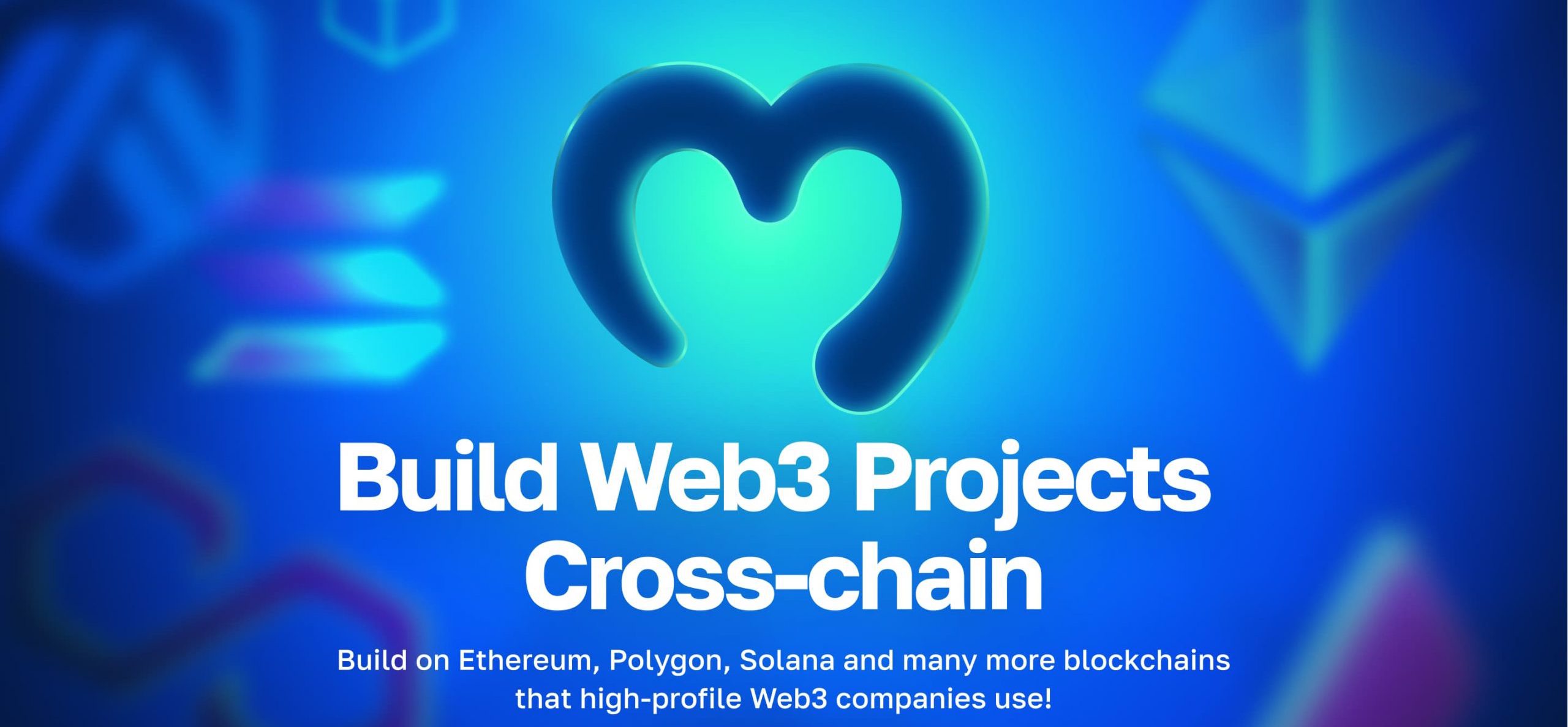
- Wallet API: The Wallet API is your essential tool for wallet data. It allows you to seamlessly fetch any wallet’s history, balances, net worth, profitability, and much more. This makes it perfect for building cryptocurrency wallets, portfolio trackers, or any other dapps requiring wallet data.
- NFT API: Moralis’ NFT API is the top Web3 tool for NFT data. With this premier API, you can access NFT balances, prices, metadata, image previews, and more. So, whether you’re building NFT marketplaces, Web3 games, or other platforms, the NFT API has you covered.
- Token API: The Token API is ideal for creating DEXs, token trackers, and other platforms that depend on ERC-20 data. This API provides seamless access to token balances, metadata, prices, owners, and much more.
- Price API: The Price API is the industry’s leading tool for price data. Use it to fetch historical and real-time prices for any token across all major chains. Additionally, the Price API supports batch requests, enabling you to query prices for multiple tokens simultaneously.
- Streams API: Moralis Streams API is the ultimate tool for setting up Web3 data pipelines. Through an intuitive interface, you can create streams at the click of a button and get real-time updates sent directly to the backend of your projects. With this API, you can easily set up in-app alerts, stream data into your database, and much more.
Explore our Web3 API page to learn more about all our premier development tools!
Summary: Linea Nodes – Set Up a Free RPC Node on Linea
Setting up Linea nodes from scratch involves building a complex infrastructure that is both time-consuming and resource-intensive to maintain. Additionally, nodes are specific to particular networks, meaning you have to set up this infrastructure for each chain you’re interacting with. As you can imagine, this quickly becomes expensive if you’re building cross-chain dapps. Fortunately, you can now avoid all the hassle with a node provider like Moralis!
Moralis takes the complexity out of running blockchain nodes by managing all the intricate details for you. This empowers you to set up nodes with just a few clicks, making the process a breeze. Here’s a quick three-step tutorial on how it works:
- Step 1: Sign up with Moralis.
- Step 2: Login, go to the “Nodes” tab, click the “+ Create Node” button, and set up your free node:
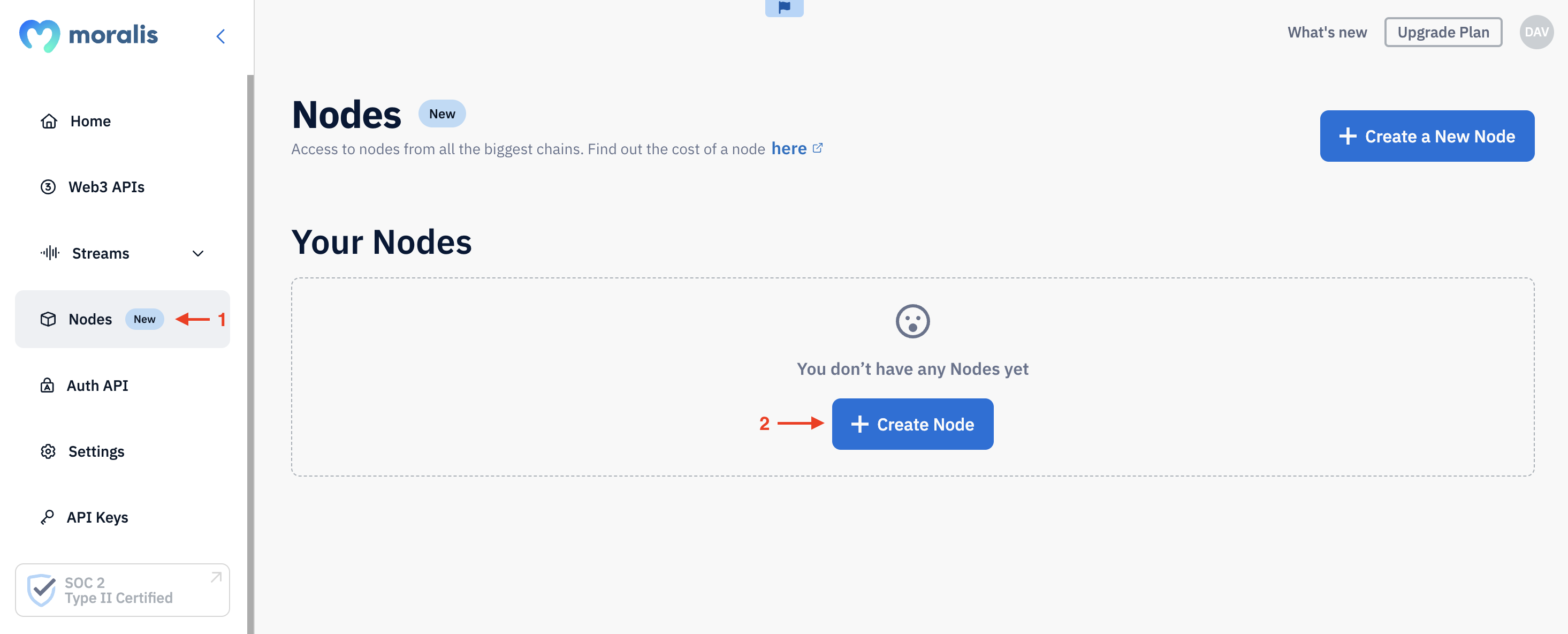
- Step 3: Copy and integrate one of your node URLs into your dapp:
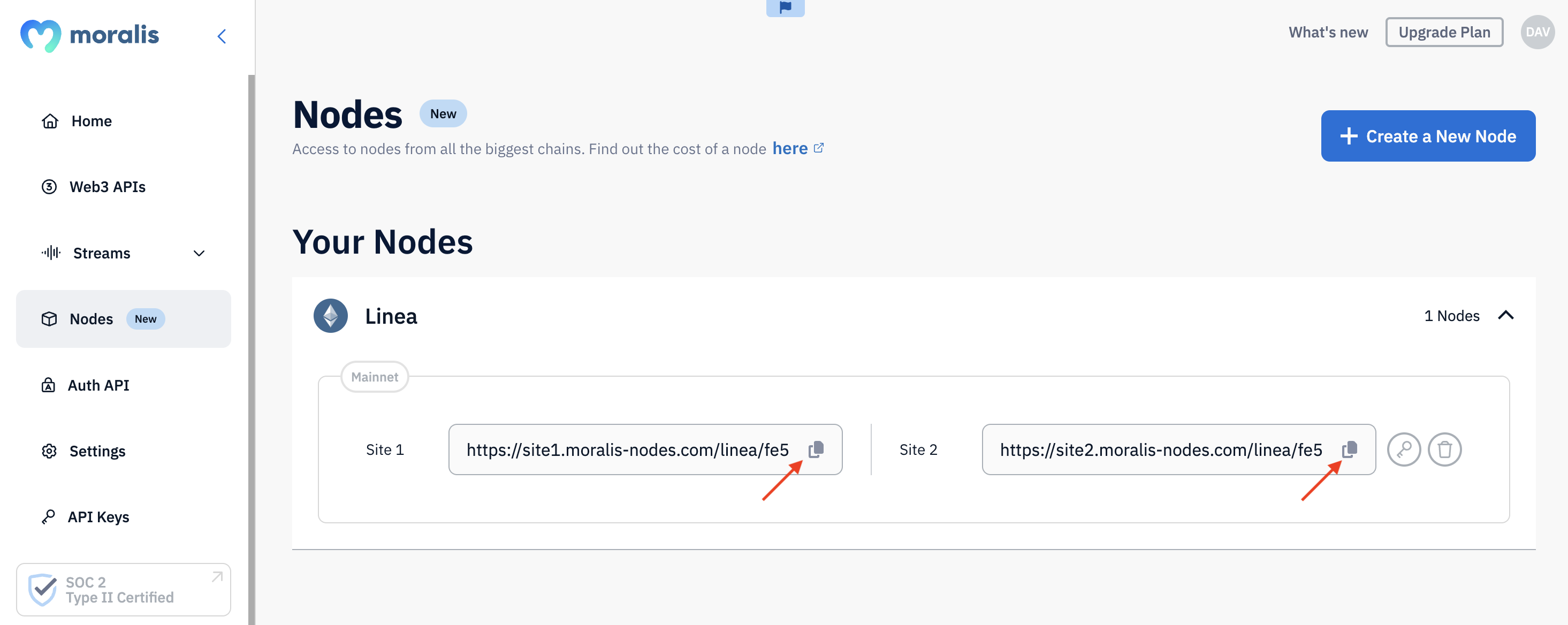
Congratulations! You now know how to seamlessly set up and run Linea nodes!
In this guide, we not only demonstrated how to run Linea nodes with Moralis but also introduced you to our comprehensive Web3 API suite. Our APIs, which include the Wallet API, Token API, and more, enable you to seamlessly integrate on-chain data into your dapps. By using our APIs, you can avoid the complexities of querying blockchain data directly from a node. Instead, you’ll receive decoded and comprehensive information right out of the box, making it a more efficient solution.
If you found this Linea node guide helpful, explore similar content on our blog. For instance, check out our article on Ethereum nodes or learn how to connect to Avalanche nodes!
Also, remember to sign up with Moralis. Creating a free account gives you instant access to our node service, allowing you to start running your own RPC nodes!
Read More: moralis.io






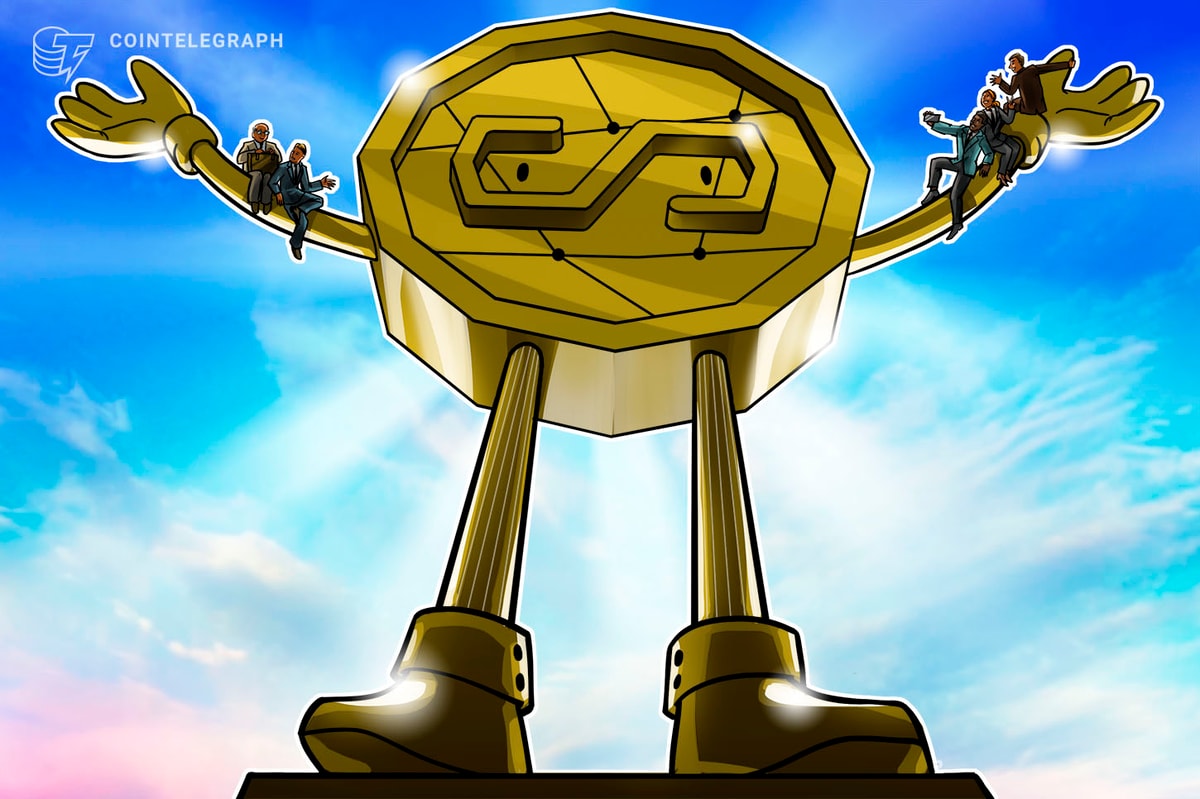


 Bitcoin
Bitcoin  Ethereum
Ethereum  Tether
Tether  XRP
XRP  Solana
Solana  USDC
USDC  Dogecoin
Dogecoin  Cardano
Cardano  TRON
TRON  Lido Staked Ether
Lido Staked Ether  Wrapped Bitcoin
Wrapped Bitcoin  Sui
Sui  Chainlink
Chainlink  Wrapped stETH
Wrapped stETH  Avalanche
Avalanche  Stellar
Stellar  Shiba Inu
Shiba Inu  Hedera
Hedera  Hyperliquid
Hyperliquid  LEO Token
LEO Token  Toncoin
Toncoin  Bitcoin Cash
Bitcoin Cash  Litecoin
Litecoin  Polkadot
Polkadot  USDS
USDS  WETH
WETH  Monero
Monero  Pi Network
Pi Network  Wrapped eETH
Wrapped eETH  Pepe
Pepe  Bitget Token
Bitget Token  Binance Bridged USDT (BNB Smart Chain)
Binance Bridged USDT (BNB Smart Chain)  Ethena USDe
Ethena USDe  Coinbase Wrapped BTC
Coinbase Wrapped BTC  WhiteBIT Coin
WhiteBIT Coin  Uniswap
Uniswap  Bittensor
Bittensor  Dai
Dai  NEAR Protocol
NEAR Protocol  Aptos
Aptos  Aave
Aave  OKB
OKB  Ondo
Ondo  Jito Staked SOL
Jito Staked SOL  Ethereum Classic
Ethereum Classic  Internet Computer
Internet Computer  Tokenize Xchange
Tokenize Xchange  BlackRock USD Institutional Digital Liquidity Fund
BlackRock USD Institutional Digital Liquidity Fund